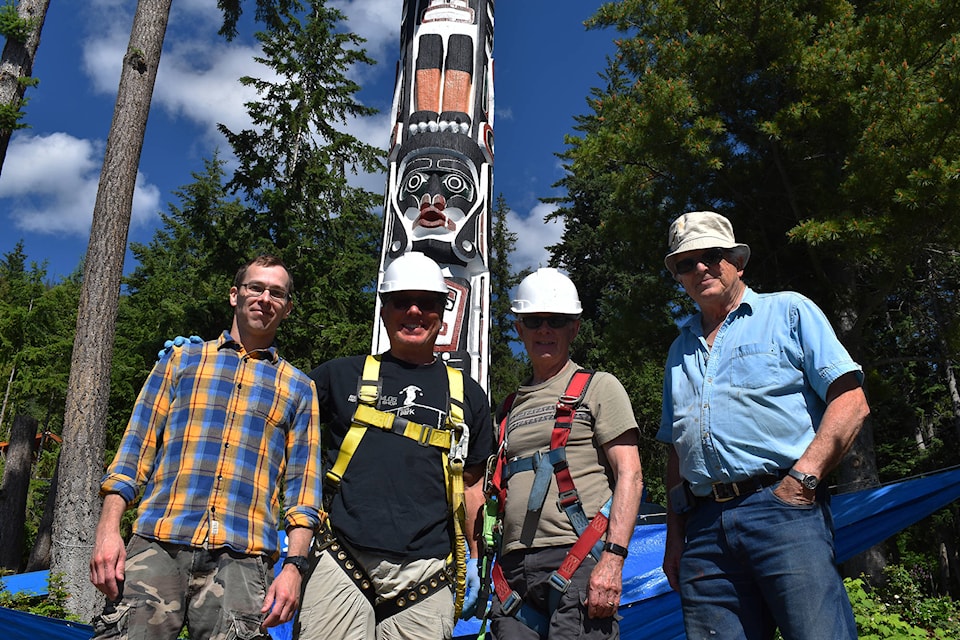Preservation of a South Shuswap totem pole is a labour of love for its owner and volunteers.
The pole, which overlooks Shuswap Lake at Totem Pole Resort on Sunnybrae Canoe Point Road, has stood there for nearly 50 years. In that time, three restorations have been assisted by Doug Armstrong, the author of Giants of the Pacific Northwest—The Hunt Family Totem Poles.
Read more: B.C. First Nation refuses totem pole gift from fellow nation
Read more: Sixty-six students from across Shuswap attend ceremony at Splatsin Centre
The restoration is no small task. Using a hydraulic lift, detailed repairs have to be made up the entire length of the 24-metre (80-foot) pole. They include a new paint job, filling of holes created by ants and woodpeckers, as well as securing the carved ears, fins and beaks of the various figures and masks on the pole.
The drive to keep the pole in good condition is shared by Armstrong’s friends and neighbors.
Dean Radinovsky came to work on the pole from New York City, where he works as a stagehand and painter for Broadway shows and has his own art studio in Brooklyn.
While Radinovsky has no background in First Nations art, he was drawn to the carving.
“I am just very impressed with the intricacies and the delicate lines. It takes a long time to paint the details, even 80-feet up, there are very fine lines,” Radinovsky said.
Read more: 60 per cent of all Canadian Indigenous languages are in B.C.
Read more: First Nations people in B.C. four times more likely to die of an overdose
Don Huculak is also volunteering his time to preserve the pole. With no initial interest, he gained a new appreciation for the craft when he started working on it himself.
“Having lived here for 28 years, I saw the pole, looked at it and went ‘yeah, its a totem pole.’ And then once you’re on it and you get this close look at it everyday, (you) see the detail in the work. It’s pretty amazing,” Huculak said.
The chief carver was Henry Hunt, a member of the Kwagiulth Nation and associate carver to the late, world-famous carver Mungo Martin. Henry Hunt was assisted by apprentices Richard Hunt and John Livingston. The three men spent more than three months hand-carving and painting the pole, using traditional Kwagiulth carving tools and weather resistant oil-based paints.
@CameronJHT
Cameron.thomson@saobserver.net
Like us on Facebook and follow us on Twitter.
